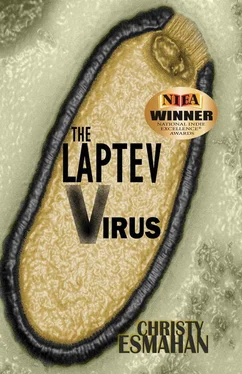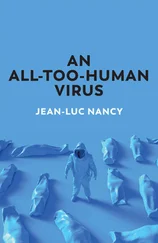She loved her work and could often be found discussing the subject of viruses with her graduate students. One of her favorite topics was whether viruses were alive. Sarah felt strongly that anything that could be crystallized was not alive.
“Sugar can be crystallized and turned into rock candy. Sea water could be evaporated to leave only the salt crystals. But nothing that is alive—not even the tiniest cells—can be crystallized and then rehydrated,” she would argue. “So if you can crystallize a virus, then it must not be alive.”
And yet, there were certainly many people who did not agree. “Viruses, in all their simplicity, are the ultimate parasites,” they would say, mysteriously.
“Then what about plasmids?” she would retort, her voice brimming with excitement. She loved discussing cases of infinitesimally smaller structures that were challenging the fragile boundaries of the definition of life all the time.
“They are simple rings of DNA that live inside bacterial cells, but they are separate from bacterial DNA. Their structure is even simpler than that of a virus, and although they can replicate at will, they don’t kill their host like viruses do. Plasmids can even pass between different bacterial cells, or different species of bacteria, taking valuable genetic knowledge, such as genes for resistance to antibiotics, with them. Are they alive?”
When new graduate students arrived at her lab, Sarah would quiz them extensively. Many of her students had studied microbiology in their undergraduate careers, but some were biochemists, and she had to be sure that they understood the premises of basic virology before they began working with HIV.
“Tell me how a virus works,” she would ask. If the student couldn’t answer a basic question like that straight off the bat, she would direct them to go study some more before applying to her lab.
Tally, who had now been working in Sarah’s lab for several years, had provided an excellent explanation. “When a virus gets inside a host cell, such as a bacterium, an amoeba or even a human cell, its DNA takes over the host cell’s DNA, becoming the new commander in chief.” Sarah had liked that metaphor because it made it clear that the viral DNA was in charge.
“The host cell’s DNA, which would normally be directing all cell activity is overthrown, in a coup d’état that is incontrovertible.”
Tally had actually used the word incontrovertible , just like that. Tally had the most versatile and extensive personal dictionary of anyone who Sarah had ever met, which was saying a lot for someone whose entire life had been in academia. Sarah had suppressed her smile, however, not wanting to make Tally feel self-conscious.
“As in the case of any military takeover, the first thing that the invading viral DNA does is to order the cell to stop what it was doing and instead dedicate itself to making hundreds of copies of the viral DNA and capsids. It is parasitism in its most elemental form. Then, to complete the forced bondage, the host cell is obliged, again under the direction of the viral DNA, to use its own cellular machinery to assemble the viral particles, stuffing each strand of viral DNA into the protein coat and sealing the capsid. In this manner hundreds or even thousands of new virus particles are formed, until the entire cell is filled to bursting with viral particles, and thus perishes, releasing all of the newly formed viruses to attack further cells.” Sarah had felt like applauding when Tally had finished with her description. She loved Einstein’s quote that if you couldn’t explain something simply, you didn’t understand it well, and Tally had just proven that she did understand.
“What about HIV?” Sarah asked. It wasn’t really a trick question; she just wanted to see how deep Tally’s knowledge was before she began her research in earnest. She needn’t have worried as Tally answered swimmingly.
“HIV viruses are even more labyrinthine.”
Labyrinthine ! Another lovely word!
“Instead of DNA, the double-stranded helix molecule which holds the instructions for life in all living organisms, from the simplest bacterium to the most complex mammalian cell, HIV viruses contain RNA, a single-stranded molecule that, upon gaining admittance into a host cell, must first be changed into DNA.”
Then she described reverse transcription, and how it had to be accomplished before cellular takeover could begin. “The HIV virus requires an enzyme which does not exist in any living cells: reverse transcriptase.” It was a marvelous answer.
Sarah remembered how thrilled and frightened scientists had been in the early 1980s when research on retroviruses was in its pioneer stage. The HIV virus and its kin, whose genetic material had to be changed from RNA to DNA, were fascinating.
Her professor, the same one with the icing hair who had drawn the simple virus on the green chalk board and then walked away, had said, “Not all viruses will immediately attack their host cell, of course, and there are many permutations on the mode of entrance and the exact steps which viruses take to overthrow host cell DNA. Herpes viruses, for example,” he said, stopping to take a puff on his pipe, “are quite old viruses, evolutionarily speaking, and thus have evolved to be able to lie dormant within the host cell, say, in the lip of the infected individual, for long stretches of time.
Herpes viral DNA integrates into the host cell DNA, and when the person makes new cells, the viral DNA is also copied by the human cell machinery, and each daughter cell carries its fresh copies of the virus. That’s why once someone has a cold blister, which is really a Herpes infection, it never really goes away. The virus lies dormant until the right trigger, such as a fever or exposure to the sun, frees it from the host cell DNA, awakening the monster which now assumes control of the cell. At that point, the lip cell no longer acts like a lip cell, but instead becomes a Herpes virus factory, creating thousands of copies and then erupting, spilling its contents, new viral particle clones, which infect nearby cells until the body’s defense system beats them down. Sacrificed white blood cells and destroyed tissue contribute to creating the pus-filled sore that is the Herpes blister.
It was beautiful and terrifying to think that once you got a cold sore, that viral DNA would be with you, mixing intimately with your own DNA, for the rest of your life. Up until then Sarah had always thought of infections in terms of things your body fought and then they went away. She had not realized that there was literally no way to ‘cure’ one of a cold sore. The active infection could be tamed, but the virus would be there, lying dormant, always ready to attack.
HIV viruses, instead of infecting lips like the Herpes virus, or nasal and throat passages like the flu viruses, assault the body’s immune system. In particular, the virus infects the specific blood cells responsible for mounting a defense against anything that could invade the body. It is as if a country were attacked, but instead of bombing cities, the invading army only targeted police departments, unequivocally demolishing every one of them. The citizens of the country would be fine for a little while, but with no one able to ever again police the streets, the country would slowly disintegrate from its own petty thievery and picayune acts of crime that would ordinarily have been kept under control.
This is what happened to AIDS victims. Most never perished directly as a result of having the HIV infection, but rather they succumbed to obscure cancers and diseases from which the person’s impaired immune system could no longer protect them.
Sarah sat at her office chair and forced herself back to the present. There was a meeting to organize for this afternoon. In the meantime, she would need to begin learning everything she could about dormant viruses emerging from the permafrost.
Читать дальше












